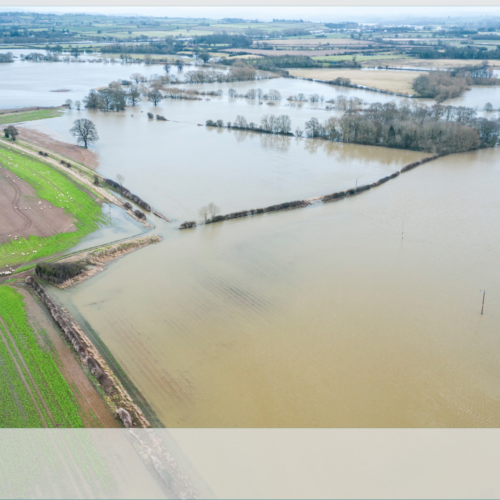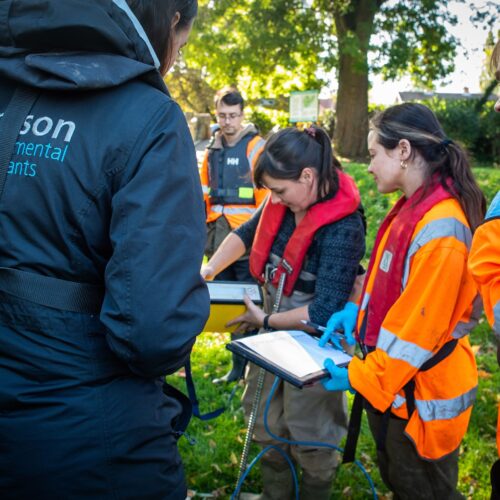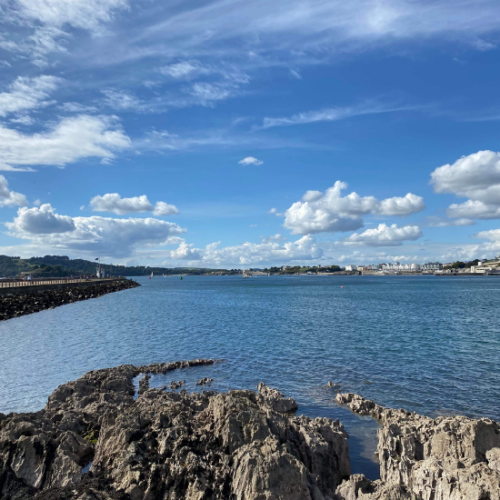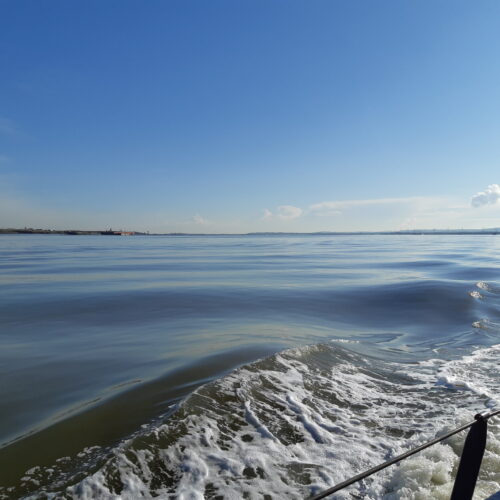A Flood Risk Activity Permit, or FRAP, is an environmental permit required for work on or near a main river, flood defence structure or sea defence.
Flood Risk Activity Permits are regulated by the Environment Agency (EA), the relevant authority in England, and Natural Resources Wales (NRW) in Wales. Even if the activity is exempt, failure to register for a FRAP is against the law.
We have collated five key considerations to help developers understand the process of applying for a Flood Risk Activity Permit.
Do I need a Flood Risk Activity Permit?
Any work within eight metres of a main river or flood defence (or 16m if working near a tidal river or a sea defence structure) legally requires a Flood Risk Activity Permit.
Examples of development works that require flood risk planning could include erecting new or repairing existing structures adjacent to or over the river, as well as anything that affects the river flow, including dredging.
There are three types of FRAP: a standard rules permit, a bespoke permit, or an exemption:
- Standard rules permit – These are for activities that meet specific criteria, such as installing a clear span bridge or an outfall up to 500mm in diameter through a headwall.
- Bespoke permit – If there is any deviation from the standard rules criteria, then a bespoke permit is required.
- Flood risk activity permit exemption – An exemption applies if the activities do not affect the riverbed, banks, water level or flow in the river (including flood flow). An exemption can be registered if the proposed works involve exempt activities, but you must operate within the description and conditions of the exemption.
To obtain a Flood Risk Activity Permit, a management system including plans, construction methods and materials must be submitted alongside supporting assessments. The assessments should demonstrate that the risk from the proposed activities has been evaluated and will not be significant. There should be no increase in flood risk and no significant impacts on water quality or ecology.
Top five considerations to successfully obtain a Flood Risk Activity Permit
We’ve put together a list of the top five considerations to successfully obtain a FRAP based on our experience of working for clients with schemes on rivers and tidal waters:
1. Make sure the scheme doesn’t increase flood risk or significantly impact water quality and ecology:
Development activities should be designed not to impede drainage, have no increase in flood risk or have insignificant impacts on water quality and ecology receptors. Where drainage design is required in the scheme, including sustainable drainage systems (SuDS), such as wetlands or swales, can help meet all these objectives and increase the success rate and efficiency of a Flood Risk Activity Permit application.
In addition, designs should encourage re-naturalisation and increased biodiversity, utilising natural materials and nature-based solutions preferentially over less sustainable materials and hard engineering, where possible. Watercourse encroachment should be avoided by working behind existing flood defences or by retreating these landward.
2. When are you planning to start development, and how long will it take?
Developers must consider the permit determination period of approximately two months from receiving a management system and all relevant supporting information. It may be necessary to undertake ecological and other environmental surveys to support the Flood Risk Activity Permit application.
Construction activities may represent a higher flood risk in winter. Alternatively, some rivers in the spring period will need to be avoided to minimise the impact on fish spawning habitats.
3. What construction methods are being used?
Construction methods should avoid and minimise impacts on flood risk, water quality and ecology as far as possible.
For example, consider the following when undertaking flood risk planning:
- When working from floating platforms alongside a bridge, can works be conducted across single bridge spans instead of across the full bridge width to decrease potential flood risk?
- Can scaffolding over a watercourse be encapsulated to prevent entry of material and pollution of the river?
- If piling is required, opt for low-noise or silent methods such as vibro- or press- piling instead of percussive piling, which generates higher noise and vibration levels and can cause injury or even death to fish.
4. Have supporting Flood Risk Assessments been undertaken?
Most schemes will require a Flood Risk Assessment (FRA) to demonstrate that the development does not impede drainage and will not lead to an increase in flood risk.
Secondly, a Water Framework Directive (WFD) assessment is also required to demonstrate there is no significant impact on the water body’s hydromorphology, water quality, habitats, species or invasive non-native species.
Finally, if no baseline ecological data are available to assess activities against, a Preliminary Ecological Appraisal may also be required to support the WFD assessment.
5. Have you considered enhancements for biodiversity?
Under the Water Framework Directive, developments must demonstrate that biodiversity will not be negatively impacted or that the scheme will prevent the status of the river from being improved in future. Example enhancements include the introduction of eel and fish passes and removing or reducing culverts and hard engineering.
To support biodiversity, developers could also use soft engineering methods, such as coir fibre matting to stabilise river banks, which enable vegetation to re-establish on bank faces and river margins. Under the Environment Act 2021, schemes requiring planning consent must achieve 10% Biodiversity Net Gain (BNG).
Acquiring a Flood Risk Activity Permit (FRAP) application with Thomson Environmental Consultants
At Thomson Environmental Consultants, we have specialists who are able to support all aspects of Flood Risk Activity Permit applications.
Our water team has considerable experience in obtaining FRAPs for clients planning activities in the freshwater, tidal and marine environments and providing supporting surveys and assessments.
We can collaborate with Milestone Environmental Consultants to provide complete FRAP and SuDS advice.
Contact us today to discuss your flood risk planning requirements, and a member of our team will be able to provide support every step of the way.











